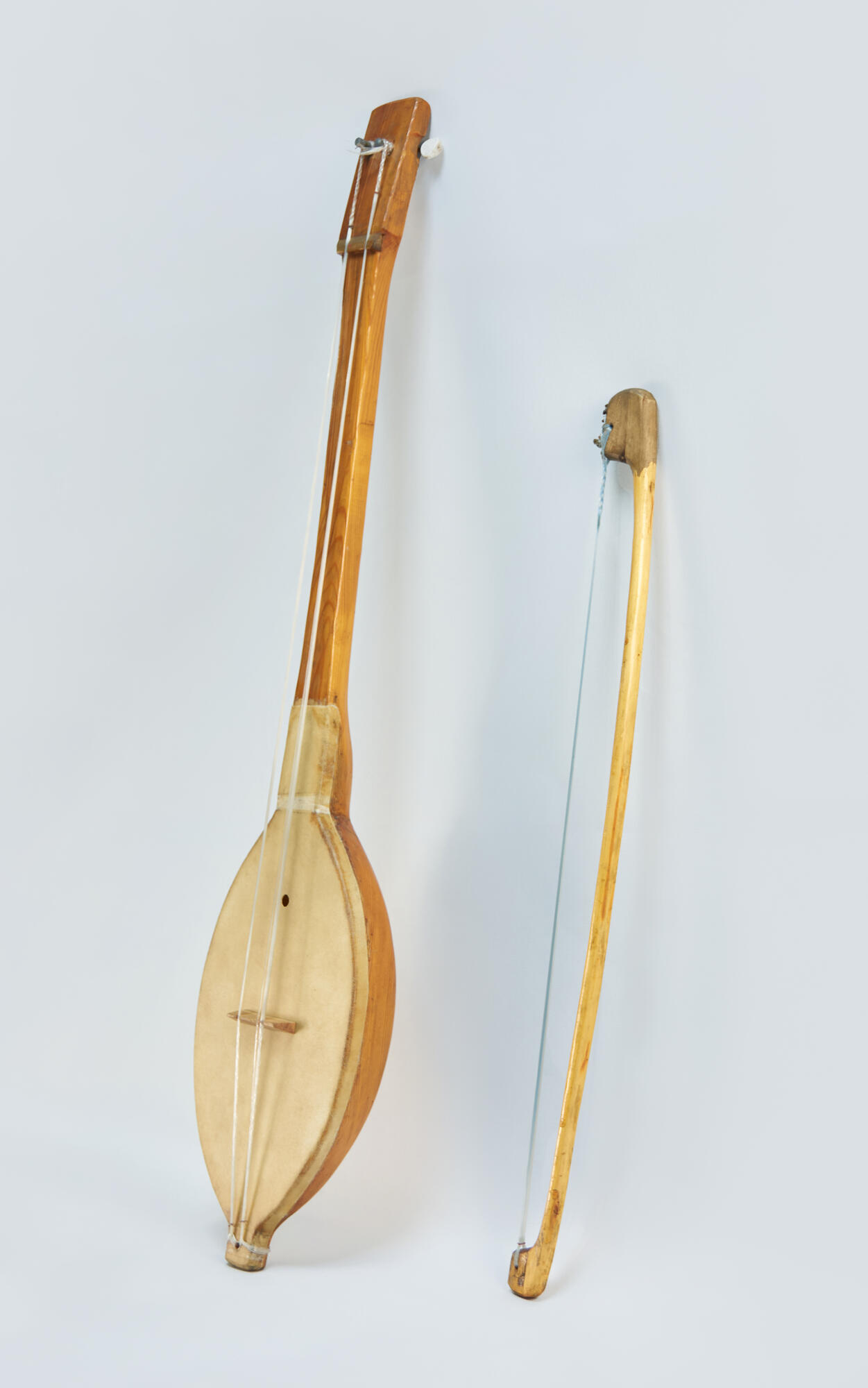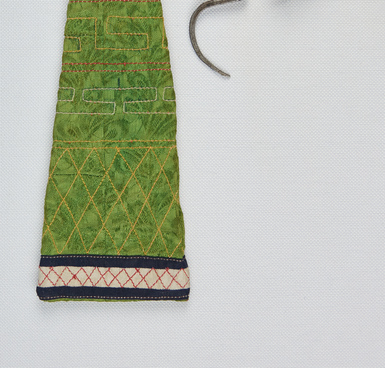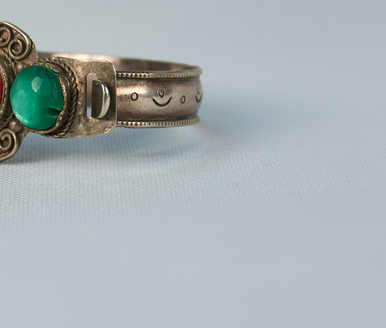The Tuvan igil is a two-stringed bowed musical instrument. It has an oval body, which extends to a long neck that ends in a carved horse-head, two strings of horsehair, and a leather soundboard with a soundhole. The igil is also called the “at bashtyg igil” (“horse-headed igil”). There is also an igil with a trapezoidal shape of the body, which is mainly found in the southern and eastern parts of the republic.
There are about 10 parts of the igil that have their own names (e.g., the head is bash, the knobs are kulaktar, and the soundhole is ut).
In most cases the igil is made by the performers themselves using traditional technology. It takes not only talent and skill, but also a certain inner state to make the igil sing softly and penetratingly.
The most experienced craftsmen say that the traditional igil is carved from larch, as it offers a softer timbre than other types of wood. Spruce, pine, and cedar are less commonly used. The body of the instrument is made from a single piece of wood. The most important thing in making an igil is the dry material. In the past, to make a particularly sonorous instrument, and to speed up the manufacturing process, the wood from the tree that was struck by lightning was used.
The soundboard (arny) is often made from the skin of small cattle. But in special cases, when one wants the instrument to be sonorous, skin taken from the front part of the horse’s skull is used.
It is believed that if strings are made by combining the hair of the tails of different horses — a trotter with small and large pacing and a mixed-gaited horse — the igil has a special sound. In modern conditions, strings are often made of thin fishing line, which is strong, but such strings have less warmth and flexibility in the sound than those made of horsehair. The fiddle has the shape of a bow.
The igil has a soft, flexible and light sound. With its rich technical and expressive possibilities, it can be used as a solo concert instrument with an extensive repertoire. However, this instrument is perfectly combined with throat singing and expresses the singer’s inner state to the fullest extent possible.




